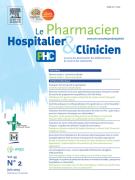Is evidence-based medicine drug therapy well implemented after ST-segment elevation myocardial infarction in contemporary practice? A one-year follow-up study - 22/03/17
 , J. Iglesias 3, R. Fesselet 3, P. Vogt 3, F. Sadeghipour 1, 2, P. Voirol 1, 2
, J. Iglesias 3, R. Fesselet 3, P. Vogt 3, F. Sadeghipour 1, 2, P. Voirol 1, 2Résumé |
Background and objectives |
Adherence to secondary prevention evidence-based medical (EBM) therapies for patients with ST-segment elevation myocardial infarction (STEMI) is essential to reduce long-term rates of major adverse cardiovascular events. Current guidelines recommend the long-term use of low-dose aspirin, high-intensity statins, angiotensin-converting enzyme inhibitors (ACEI)/angiotensin receptor blockers (ARB) and beta-blockers (BB), in addition to P2Y12 inhibitors for one year. We aimed to assess the adherence to secondary prevention EBM therapies from discharge to one-year follow-up among patients with STEMI undergoing primary percutaneous coronary intervention (PCI) in contemporary practice.
Methods |
Observational single-center study including consecutive patients with STEMI undergoing primary PCI in a tertiary hospital in Switzerland over a one-year period. Secondary prevention EBM therapies were assessed at discharge and at one-year follow-up. Primary outcome is the prescription of key secondary prevention EBM therapies (aspirin, P2Y12 inhibitors, statins, ACEI/ARB and BB) from discharge to one-year follow-up after STEMI. BB was recommended only for patients with heart failure or left ventricular ejection fraction (LVEF)<40%.
Results |
A total of 179 patients were included. EBM drug prescription at discharge was 99.4% for aspirin (n=178), 97.8% for P2Y12 receptor inhibitor (n=175), 97.2% for statin (n=174), 93.9% for ACEI/ARB (n=168) and 87.5% for BB (n=28, among 32 patients with LVEF<40%). Ticagrelor (84.6%) was the major P2Y12 inhibitor prescribed. Overall, 25 EBM drugs were missing at discharge with 13 of these missing drugs having no justification for no-prescription (contraindications, allergy or intolerance). At one-year follow-up (median 13.4 months, n=156), aspirin, statins and ACEI/ARB prescription rates were 92.9% (n=145), 92.3% (n=144) and 82.1% (n=128) respectively. Nineteen out of 23 patients (82.6%) with LVEF<40% received a BB. Among patients treated with ticagrelor at discharge, 31 (23.5%) were receiving ticagrelor at follow-up, whereas 21 (15.9%) were switched to another P2Y12 inhibitor. Among patients who discontinued ticagrelor (n=80, 60.6%), duration of dual antiplatelet therapy was 12 months for 80% (n=64) and discontinued prematurely (<1 year) for 15% (n=12) patients. Reasons for ticagrelor early discontinuation or switch were not specified.
Discussion and conclusions |
In a real-world cohort of patients with STEMI undergoing primary PCI, prescription of recommended secondary prevention medications at discharge is excellent. Adherence to EBM therapies at one year remains high with more than 80% of patients receiving all EBM drugs. Early discontinuation of dual antiplatelet therapy was observed in 15% of patients, whereas ticagrelor was switched for another P2Y12 inhibitor in 15.9% of patients. These observations highlight key opportunities to improve longitudinal use of secondary prevention therapies after STEMI in routine clinical practice.
Le texte complet de cet article est disponible en PDF.Plan
Vol 52 - N° 1
P. e16-e17 - mars 2017 Retour au numéroBienvenue sur EM-consulte, la référence des professionnels de santé.
L’accès au texte intégral de cet article nécessite un abonnement.
Déjà abonné à cette revue ?

